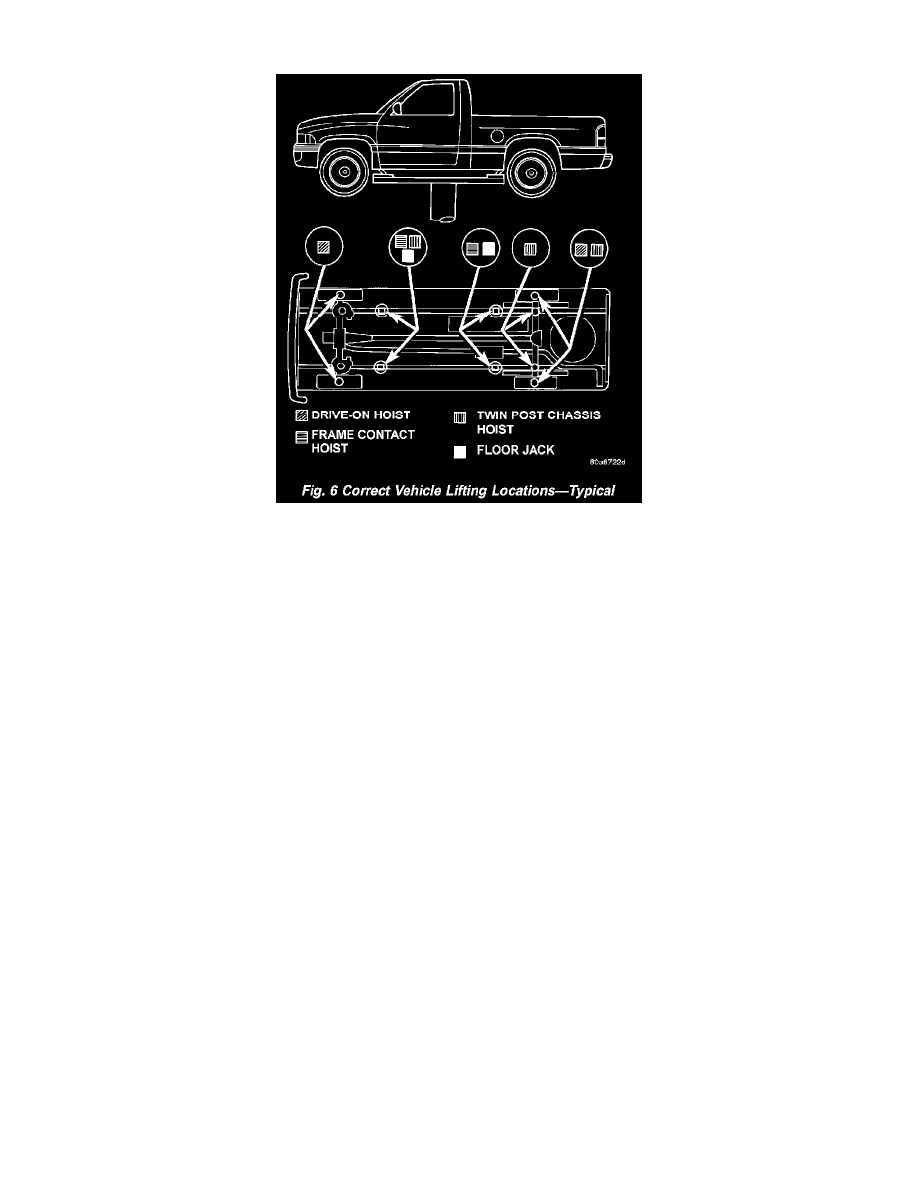Dakota Quad Cab 2WD V8-5.9L VIN Z LDC (2002)

Vehicle Lifting: Service and Repair
Fig.6 Correct Vehicle Lifting Locations - Typical
STANDARD PROCEDURE
HOISTING RECOMMENDATIONS
Floor Jack
CAUTION: Do not attempt to lift a vehicle with a floor jack positioned under:
-
An axle tube.
-
Aluminum differential.
-
A body side sill.
-
A steering linkage component.
-
A drive shaft.
-
The engine or transmission oil pan.
-
The fuel tank.
-
A front suspension arm.
When properly positioned, a floor jack can be used to lift a Dakota vehicle (Fig. 6). Support the vehicle in the raised position with jack stands at
the front and rear ends of the frame rails.
Hoist
WARNING: THE HOISTING AND JACK LIFTING POINTS PROVIDED ARE FOR A COMPLETE VEHICLE. WHEN A CHASSIS
OR DRIVE TRAIN COMPONENT IS REMOVED FROM A VEHICLE, THE CENTER OF GRAVITY IS ALTERED MAKING SOME
HOISTING CONDITIONS UNSTABLE. PROPERLY SUPPORT OR SECURE VEHICLE TO HOISTING DEVICE WHEN THESE
CONDITIONS EXIST.
CAUTION: DO NOT LET THE REAR WHEELS/AXLE HANG UNSUPPORTED WHEN THE VEHICLE IS LIFTED WITH THE
PARKING BRAKE APPLIED.
NOTE: When a frame-contact type hoist is used, verify that the lifting pads are positioned properly (Fig. 6).
A vehicle can be lifted with:
-
A single-post, frame-contact hoist.
-
A twin-post, chassis hoist. A ramp-type, drive-on hoist.
